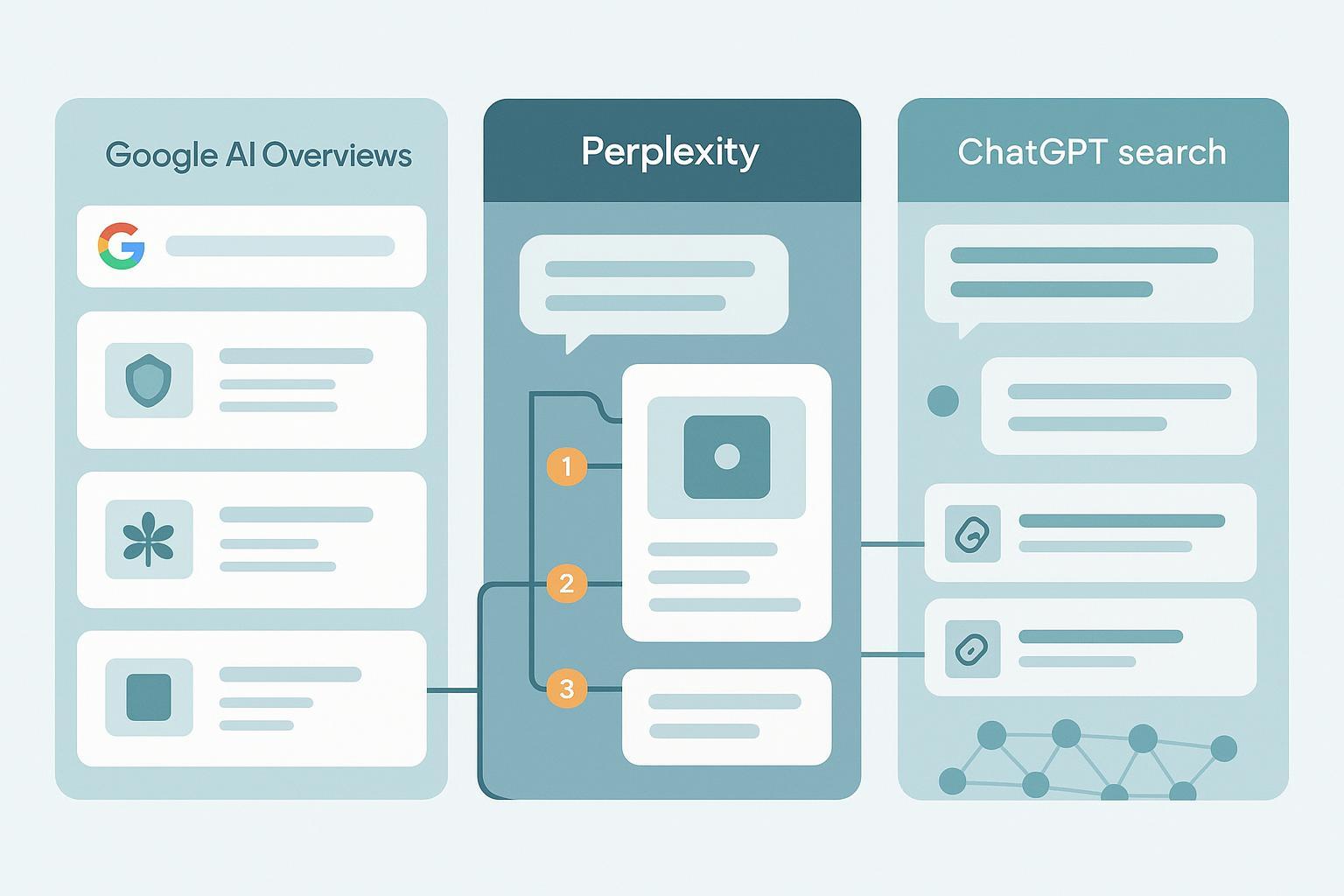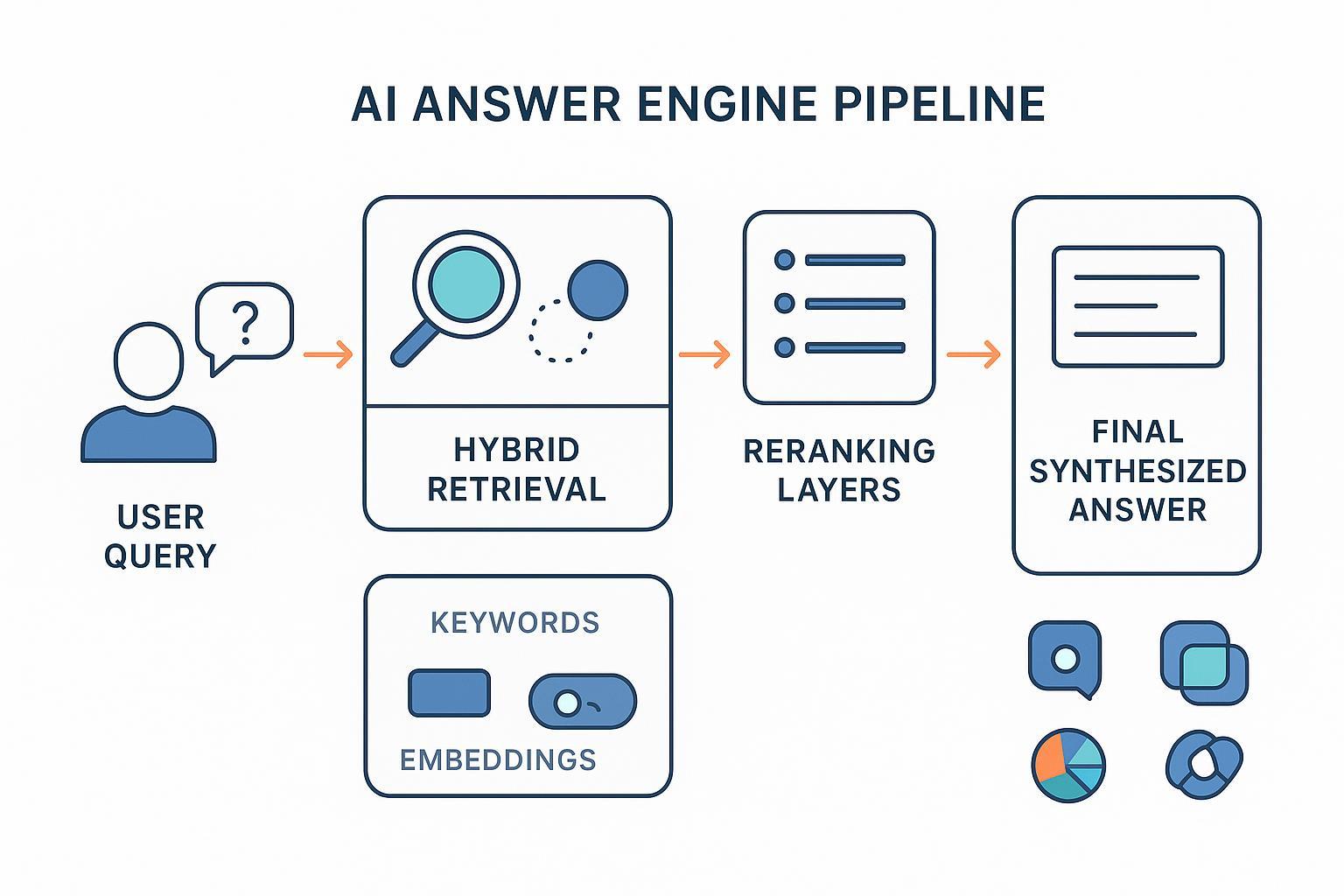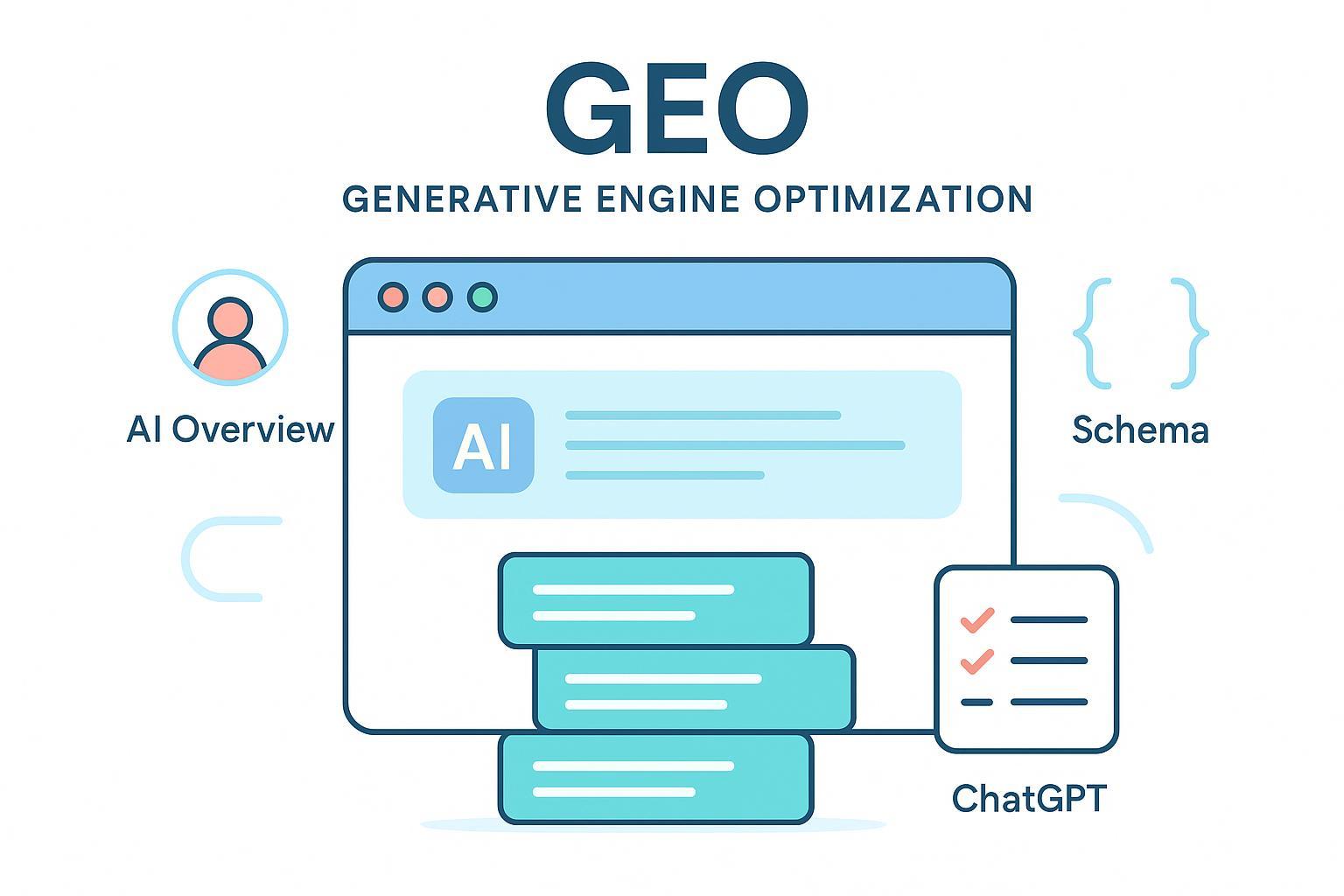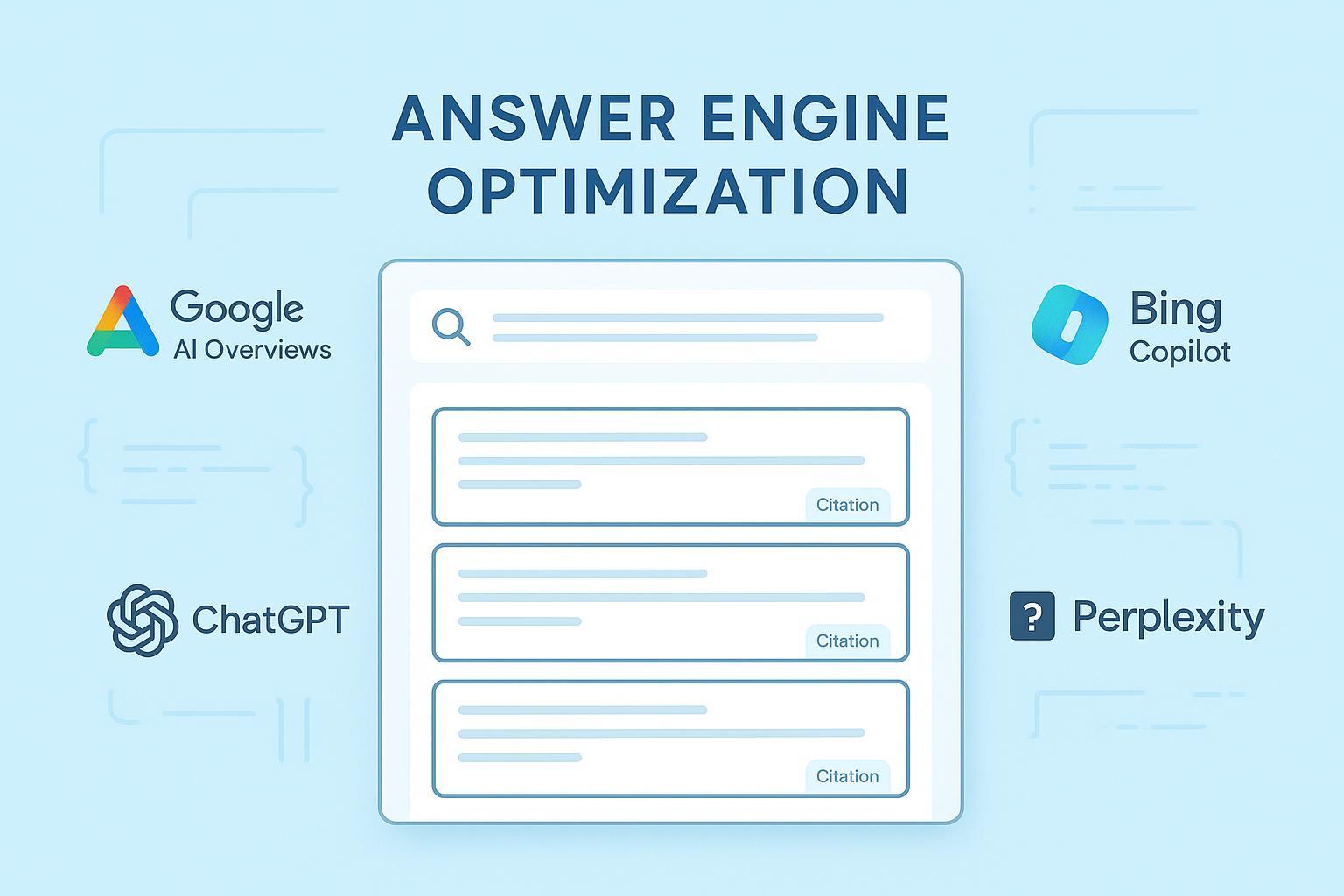Best Practices for E-E-A-T in GEO: Expert Trust Signals for AI Search (2025)
Proven 2025 E-E-A-T strategies for GEO: establish expertise, entity authority, provenance, and trust in Google AI Overviews & AI search. Actionable, advanced, and audit-ready.

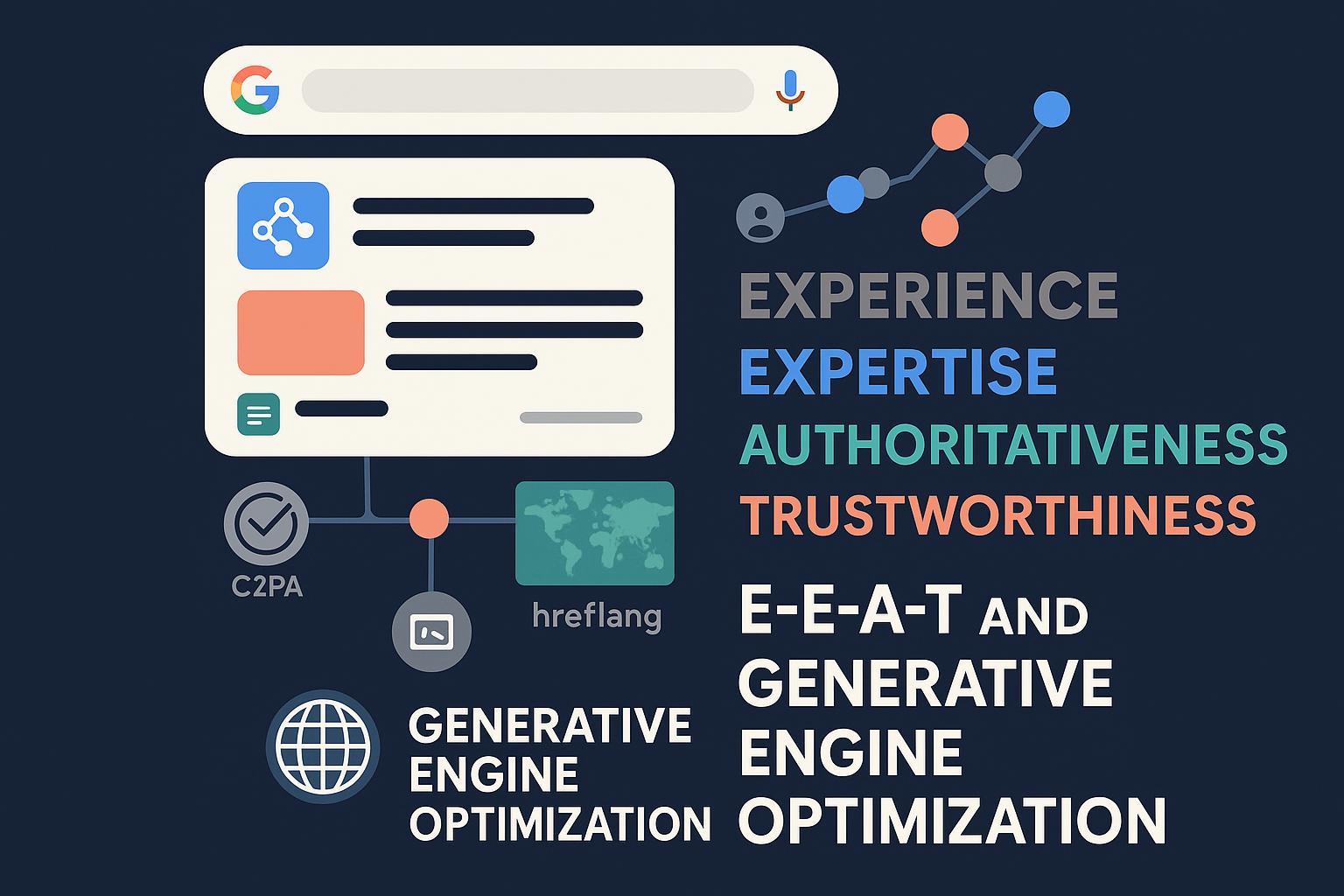
E-E-A-T isn’t a slogan in 2025—it’s the operating system for Generative Engine Optimization (GEO). After Google’s March 2024 core update integrated “helpfulness” into core ranking systems and tightened spam policies, the bar for inclusion in AI Overviews/AI Mode and classic results rose materially. Google’s own language emphasizes people-first content and quality over scale, as described in the March 2024 core update announcement by Google Search Central (2024) and its evolving spam policies. See Google’s explanation in the March 2024 core update blog: Google Search Central — March 2024 core update and spam policies.
This best-practice guide distills what consistently works across programs we’ve run: concrete signals, repeatable workflows, and measured tactics that raise your odds of being cited, linked, and trusted by AI features—without tripping policy wires.
1) Ground rules: How E-E-A-T maps to GEO in 2025
- Experience and Expertise: Demonstrable first-hand work and verifiable credentials. This aligns with Google’s quality emphasis post–March 2024 and its “people-first” guidance reiterated in the 2025 post on succeeding in AI Search: Google — Succeeding in AI Search (2025).
- Authoritativeness: Cross-platform corroboration and entity integrity—your authors and organization must be clearly defined entities connected to authoritative profiles.
- Trustworthiness: Transparent sourcing, accurate citations to primary authorities, governance that prevents scaled content abuse, and clear disclosure/provenance for AI assistance when used.
Why it matters for GEO: Studies in 2025 show AI Overviews appear in roughly low-teens percent of queries and alter click distribution. Semrush’s 2025 analyses reported AI Overviews in about 11–13% of queries, concentrated in informational intent: Semrush — AI Overviews study (2025). BrightEdge’s one-year view (May 2025) observed search usage rising while CTR to third-party sites dropped around 30% for impacted queries and about 54% overlap between AIO citations and organic results: BrightEdge one-year report (May 2025). The implication: the pages AI features quote and cite capture disproportionate attention.
2) Foundation first: People-first content and authorship signals
Non-negotiables you can implement this quarter:
- Put a visible byline near the title, including a one-line credential (role, certifications, years).
- Link each byline to a full author profile page with awards, publications, and verifiable “sameAs” links (LinkedIn, ORCID, Wikipedia/Wikidata if notable).
- Add a concise “First-hand experience” section to expert posts (what was tested, how, results).
- Cite primary sources inside the prose with descriptive anchors; avoid dumping generic links.
- Maintain site-level “About,” editorial policy, contact, and privacy pages.
- Keep update logs and “last updated” stamps for YMYL and evergreen content.
Implement structured data so machines can verify what humans see. Follow Google’s Article structured data guidance and schema fundamentals: Google — Article structured data and Intro to structured data.
Example JSON-LD (condensed):
{
"@context": "https://schema.org",
"@type": "Article",
"headline": "E-E-A-T for GEO: 2025 Playbook",
"author": [{
"@type": "Person",
"name": "Jordan Lee",
"jobTitle": "Principal SEO Strategist",
"url": "https://example.com/authors/jordan-lee",
"sameAs": [
"https://www.linkedin.com/in/jordan-lee",
"https://www.wikidata.org/wiki/Q1234567"
]
}],
"publisher": {
"@type": "Organization",
"name": "Example Co",
"url": "https://example.com",
"logo": {
"@type": "ImageObject",
"url": "https://example.com/logo.png"
}
},
"about": [{"@type":"Thing","name":"Generative Engine Optimization"}],
"mentions": [{"@type":"Thing","name":"E-E-A-T"}],
"datePublished": "2025-09-29",
"dateModified": "2025-10-05"
}
Validate before shipping using the Rich Results Test: Google — Rich Results Test.
Trade-offs to acknowledge:
- Detailed author bios and editorial pages take time to build and maintain, especially for large catalogs. Prioritize YMYL and high-impact hubs first.
- Don’t over-credential. Relevance beats alphabet soup. A security engineer’s certs matter on infosec content; they don’t move the needle for recipes.
3) Entity alignment: Make yourself unambiguous to machines
AI features and search systems rely on entities. Your job is to become unmistakable:
- Define entity homes: a canonical Organization page and distinct Author pages.
- Use Organization and Person schema with robust sameAs to authoritative profiles (LinkedIn; Wikipedia/Wikidata where policy-compliant).
- Connect topical context in content: add about/mentions in Article schema to the core entities of your topic.
- Keep your identity consistent across languages and platforms (name, founding year, NAP, key staff).
- Build corroboration: publish expert talks on YouTube, research on GitHub, and conference bios—then link them via sameAs in your profiles.
If you’re new to entity work, pair the above with a basic entity audit and fix inconsistencies first. Validate your schema with the Schema Markup Validator: Schema.org — Schema Markup Validator.
Common pitfall: mixing brand and product entities, or using inconsistent person name formats. Pick a canonical label and stick to it everywhere, including hreflang versions.
4) Trust and provenance: Content Credentials (C2PA) as a practical signal
C2PA-backed content credentials let you cryptographically bind provenance metadata (who created it, where, when, and what tools). While not a ranking factor per se, provenance helps resolve misattribution, clarifies AI assistance, and supports editorial trust.
What the standards say:
- The C2PA 2.2 specification details manifests, signatures, and verification flows: C2PA Specification 2.2.
- The Content Authenticity Initiative explains verification and badges: Content Authenticity Initiative — How it works.
Operationalize in your CMS workflow:
- Capture provenance at creation (author, sources, tools, datasets, revision history).
- Generate and embed signed C2PA manifests for hero images, infographics, and downloadable assets.
- Display a recognizable “Content Credentials” badge and provide a verification link.
- Disclose AI assistance where material (model used, human reviewer name/role).
Trade-off: Implementing C2PA requires process and tooling. Start with high-stakes assets (YMYL, proprietary research) before expanding.
5) AI Overviews/AI Mode: Inclusion patterns and controls
What we know from 2025:
- Incidence: AI Overviews show more often on informational queries; Semrush’s mid-2025 data suggests around low-teens prevalence overall: Semrush — AI Overviews study (2025).
- Impact: BrightEdge’s one-year analysis (May 2025) observed higher search usage but reduced click-through for affected queries, and roughly 54% overlap between AIO citations and organic winners: BrightEdge one-year report (May 2025).
How to increase your odds of being cited:
- Engineer “quotable” content: concise definitions, numbered procedures, pros/cons lists, and expert Q&A blocks that can be lifted accurately.
- Maintain freshness and clarity: add “last updated” with a short change note; resolve contradictions within your site.
- Strengthen entity signals: connect articles to people and organizations; mark up with about/mentions and sameAs.
- Cite authoritative sources with descriptive anchors; avoid fluffy link lists.
Control levers and trade-offs:
- To limit snippet reuse or AIO usage for specific pages, Google documents the robots meta tag nosnippet and related controls. See: Google — Robots meta tag and X-Robots-Tag and Google’s AI features owner guidance: AI features and your website.
- Trade-off: nosnippet can reduce traditional snippet visibility and may limit AIO inclusion. Apply selectively (e.g., on sensitive paywalled content) rather than site-wide.
6) International and multilingual GEO: Localize E-E-A-T, not just language
Internationalization is a trust exercise as much as a technical one.
Technical hygiene:
- Use distinct URLs per language/region; implement reciprocal hreflang, including self-references and x-default; avoid auto-redirects.
- Translate metadata, alt text, and UI labels; keep one language per page.
- Follow Google’s international site guidance: Google — Managing multi-regional and multilingual sites.
Trust and relevance:
- Localize author bios with relevant local credentials and memberships.
- Cite local authorities and standards bodies in each language.
- Keep entity data consistent across languages; link localized sameAs when available.
7) Governance: AI + human editorial workflow that prevents policy violations
Your workflow is your risk control. Anchor it to Google’s policy direction on scaled content abuse and site reputation abuse (2024–2025): see Google — Spam policies (updated 2024) and the March 2024 update note: Google Search Central — March 2024 core update.
Recommended steps:
- Topic selection: choose topics where your SMEs have first-hand experience; avoid mass-scaled production.
- Drafting: allow AI assistance for outlines and first drafts; require capture of sources and provenance.
- Automated checks: run hallucination/verification scans, plagiarism detection, and broken-link audits.
- SME review: subject-matter experts add first-hand insights, validate claims, and approve sources.
- Compliance: attach bylines, schema, and sameAs; resolve policy red flags; decide on nosnippet for sensitive pieces.
- Publication: validate schema; publish; record “last updated” and change note.
- Maintenance: set refresh cadences; publish corrections quickly; keep provenance visible.
Also reference the latest Search Quality Rater Guidelines PDF for durable E-E-A-T interpretations (accessed 2025): Google — Search Quality Rater Guidelines PDF. Although Raters don’t influence rankings directly, their framework mirrors how quality is evaluated.
8) Measurement: KPIs and telemetry for E-E-A-T and GEO
Track outcomes you can act on:
- AI features performance:
- Inclusion/citation rate by topic cluster
- Overlap between AIO citations and top-3 organic rankings
- Traffic and conversion quality from cited links
- E-E-A-T proxies:
- Author profile completeness and sameAs coverage
- External citations from reputable domains
- Update recency and correction SLA adherence
- Technical integrity:
- Structured data validation pass rate
- Hreflang error rate and international parity
- Provenance (C2PA) coverage for key assets
Tooling tip: For multi-platform AI visibility and sentiment, platforms like Geneo help teams monitor AI Overviews citations and sentiment in real time across AI search surfaces. Use such telemetry to prioritize refreshes and identify which “quotable blocks” are getting cited most often.
For stack selection in larger teams, you can also evaluate alternatives to assemble the right monitoring and reporting mix; here’s a practical comparison to help you choose the right AI brand monitoring stack for GEO.
9) Advanced playbook: Engineering citations and entity prominence
- Create quotable definitions: 35–60 words, unambiguous terminology, with a primary-source citation embedded. Place near the top of the page.
- Add expert Q&A blocks: short, authoritative answers with SME names. These often surface cleanly in AI responses.
- Build procedural lists: steps 1–5 with nouns-first phrasing and minimal pronouns to reduce ambiguity in model selection.
- Use entity scaffolding in schema: add about/mentions for topical entities and ensure author/organization sameAs are complete.
- Internal linking for hubs: centralize topic hubs; link spokes with descriptive anchors that include the entity or task.
- Freshness choreography: make small, meaningful updates monthly on important hubs; include a note explaining what changed and why.
Quick validation loop:
- Draft → 2) SME pass → 3) Schema validation (Rich Results Test) → 4) Entity check (are sameAs and about/mentions present?) → 5) Publish → 6) Monitor AIO citations and organic shifts weekly → 7) Iterate headings and quotable blocks.
10) Pitfalls and anti-patterns to avoid
- Scaled content abuse: mass AI output without human oversight or first-hand expertise. This risks deindexation under updated spam policies.
- Site reputation abuse: hosting thin, third-party content to borrow domain authority.
- Stale YMYL: outdated guidance on health, finance, or legal topics without update logs or SME review.
- Schema drift: invalid or contradictory schema between templates; unvalidated JSON-LD.
- Identity confusion: inconsistent author names, multiple variants across languages, missing sameAs.
- No provenance: unverifiable media sources; undisclosed AI assistance on expert content.
11) Your 30/60/90-day plan
30 days — Foundation
- Ship visible bylines and author profile pages for top 50 pages by traffic.
- Add first-hand experience sections and embed 1–2 proprietary data points per priority page.
- Implement Article + Person + Organization schema; validate and fix errors.
- Start provenance with C2PA on flagship visuals and research PDFs.
60 days — Expansion
- Establish entity homes and sameAs for all authors and the organization; align across languages.
- Build topic hubs with quotable definitions and expert Q&A blocks.
- Localize E-E-A-T elements (bios, sources) on top international pages; fix hreflang.
- Introduce correction SLAs and publish editorial standards.
90 days — Optimization
- Monitor AIO citations weekly and iterate headlines/definitions based on inclusion patterns.
- Increase C2PA coverage to 80%+ of new hero assets; display credentials badges site-wide.
- Improve structured data pass rate to >95%; reduce hreflang errors close to zero.
- Publish one original study or case per quarter to deepen Experience and Authoritativeness.
For a concrete example of how to structure AI visibility analyses and longitudinal tracking, review a Geneo Query Report format to see how Geneo structures AI search visibility analyses.
Closing thought
In 2025, E-E-A-T is not a checklist—it’s an operating model that spans editorial judgment, technical clarity, and provenance. Implement the foundations, wire them into governance, and let measured iteration guide your GEO wins.


